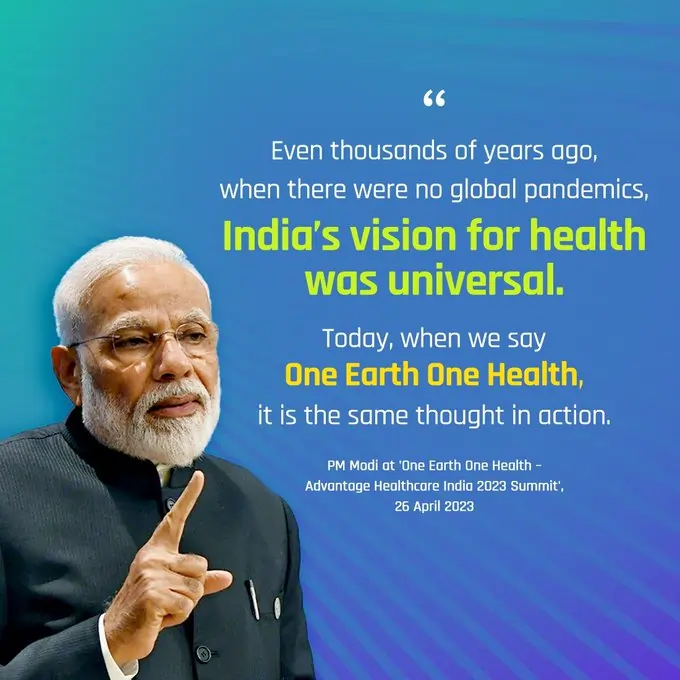
DELHI, May 24, 2025 – In a high-stakes NITI Aayog meeting held on Saturday, Prime Minister Narendra Modi delivered a powerful message to the Chief Ministers and state representatives: collaborate like “Team India” and work towards the collective dream of a Developed India by 2047.
The Prime Minister emphasized the importance of unity, tourism-led development, and future-ready cities, encouraging states to identify and develop at least one world-class tourist destination.
This bold vision, called “One State, One Global Destination,” aims to put India’s diverse culture and natural beauty on the global tourism map.

A Call for Unity: Team India Spirit
PM Modi’s speech at the NITI Aayog meeting was rooted in one central idea — cooperative federalism. Drawing parallels with the Indian cricket team’s collective strength, he urged state governments to work hand-in-hand with the central government to achieve national goals.
“No goal is impossible when we work like Team India,” said the Prime Minister.
“A developed India is not just a central government objective — it is the dream of 140 crore Indians.”
His remarks come at a critical time, shortly after Operation Sindoor and rising tensions with Pakistan, marking this as his first official meeting with Chief Ministers since the developments.
Tourism as a Vehicle for Development
One of the meeting’s key highlights was Modi’s new tourism proposal:
“One State: One Global Destination.”
PM Modi said every Indian state must focus on developing at least one globally competitive tourist destination, complete with world-class infrastructure, hospitality, and services.
“Each state has its own unique culture, heritage, and geography. Let’s use these assets to build international-level tourism hubs,” he explained.

The vision is not limited to tourism alone; it aims to boost the regional economy, generate employment, and even uplift surrounding towns and cities.
Why Tourism?
Tourism in India is an underutilized economic goldmine. According to industry data, India contributes less than 2% of global tourism revenue, despite being one of the most culturally rich nations in the world.

By investing in tourism:
- States attract foreign investment
- Local artisans and businesses benefit
- Employment in hospitality, transport, and retail rises
- Global cultural influence expands
Tourism also plays a soft power role — projecting India’s image on the global stage, and helping shape international perceptions.
Building “Future-Ready” Cities
Besides tourism, PM Modi stressed the urgent need for urban development. He urged state leaders to create future-ready cities equipped with smart infrastructure, sustainable housing, efficient transportation, and clean energy.
“Urbanization is an opportunity, not a challenge. Let’s build cities that are sustainable, smart, and prepared for the future.”

He suggested adopting new-age technologies like AI-based traffic management, green buildings, renewable energy systems, and digital public services.
States Responding to the Vision
Several states have already taken steps toward making PM Modi’s tourism vision a reality:
- Rajasthan is investing in luxury desert tourism and heritage experiences.
- Kerala is promoting its backwaters and wellness retreats internationally.
- Uttarakhand is pushing eco-tourism and spiritual tourism.
- Goa is enhancing its coastal infrastructure to attract premium international tourists.
With this new directive, each state will now be encouraged to formally declare one primary global destination project under the NITI Aayog’s guidance.
A Bold Stand Amidst Adversity
The Prime Minister’s emphasis on tourism is especially significant given the recent terrorist attack in Pahalgam, Kashmir, which claimed 26 lives and triggered a temporary decline in tourist footfall.
Despite this, Modi’s message was clear:
“We will not bow down to fear. Development must continue.”
His resolve shows the government’s intent to prioritize growth, stability, and international confidence in Indian tourism — even in vulnerable regions.
Linking Tourism to National Goals
PM Modi’s tourism strategy aligns closely with India’s broader ambitions:
| Goal | How Tourism Helps |
|---|---|
| Developed India by 2047 | Boosts GDP, creates jobs, and enhances international image |
| Vocal for Local | Promotes regional crafts, food, and traditions |
| Digital India | Encourages online bookings, e-visas, digital payments |
| Swachh Bharat | Improves hygiene and public infrastructure |
| Make in India | Boosts domestic hospitality brands and travel tech |
While the vision is ambitious, there are several roadblocks:
- Infrastructure gaps in rural or remote destinations
- Safety concerns, especially in politically sensitive areas
- Environmental sustainability of high-tourist zones
- Funding and implementation delays
To tackle these, the central government is expected to release detailed guidelines, funding models, and private-public partnership (PPP) frameworks in the coming months.
The Road Ahead
PM Modi’s address at the NITI Aayog meeting sends a strong message: India’s development journey is a team effort. Whether it’s future-ready urban centers or international-grade tourist hubs, the goal is clear — elevate India’s status on the global stage.
If states embrace the Team India approach, the dream of “Viksit Bharat by 2047” (Developed India) could become a reality.
PM Modi’s “One State: One Global Destination” initiative is more than just a tourism plan — it’s a blueprint for decentralized economic development, powered by cultural pride and strategic global positioning.
As the world looks at India with growing interest, the time is ripe to unlock the untapped potential of our states — one global destination at a time.

